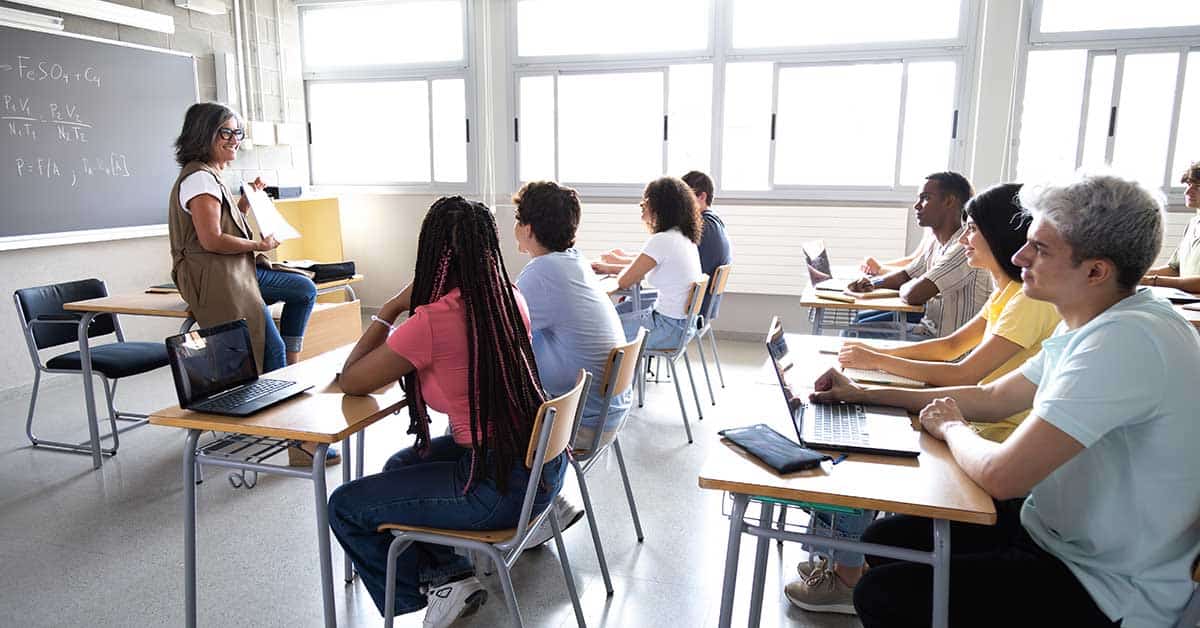Table of Contents
Those Who Don’t Need It, Do It
High-achieving students frequently excel in class without additional practice. Yet, they often spend hours completing assignments that barely stretch their learning or mastery (Marzano, 2023).
- Those Who Need It, Don’t Do It: Students who truly benefit from extra practice often fail to complete homework due to lack of supervision, insufficient understanding of the concepts, or competing responsibilities at home (Cooper, 2021). Some resort to copying from peers or siblings or even using artificial intelligence to produce subpar or superficial work, bypassing any real learning (Kohn, 2021).
This paradox has led many educators to question whether homework is fulfilling its intended purpose or has become a ritualistic exercise with little tangible impact on genuine skill development.
New Empirical Data: Numbers That Shock
A recent study by the National Center for Education Statistics (NCES, 2023) surveyed 7,500 high school students across 25 states and found:
- 60% of low-performing students reported rarely completing homework due to confusion about the assignment or a lack of time/energy for after-school jobs.
- 55% of high-performing students acknowledged feeling “significant stress” from their homework load, which caused them to sacrifice extracurricular activities, family time, and volunteering opportunities.
- 40% admitted to copying homework from classmates at least once a week—with many indicating they never fully grasped the underlying concepts.
- 76% of teachers surveyed expressed that homework completion often inflates grades for compliance rather than demonstrating mastery of standards (Marzano, 2023).
These findings paint a sobering picture: students who might benefit from extra practice at home often can’t or won’t do it, while those who don’t need it are doing it, but at great personal cost. Meanwhile, a significant percentage of copy work bypasses skill development altogether.
Figure 1: Self-Reported Homework Completion vs. Mastery
(Adapted from a 2023 NCES survey of 7,500 high school students)
|---------------------------|---------------------------|
| Student Group | Self-Reported Homework |
| | Completion Rate |
|---------------------------|---------------------------|
| High Achievers | 85% |
| (A-B students) | |
|---------------------------|---------------------------|
| Average Students | 65% |
| (C students) | |
|---------------------------|---------------------------|
| Low Performers | 40% |
| (D-F students) | |
|---------------------------|---------------------------|
Interpretation: The highest achievers (often needing less review) complete the most homework, whereas struggling students complete the least, further widening academic gaps (NCES, 2023).
Real-Life Case Studies
Case Study A: The “Top Student” Burnout
Student Profile: Maria is a high school junior with a 4.0 GPA.
- Routine: Maria devotes 3–4 hours nightly to homework—largely repetitive worksheets and busy work for AP courses.
- Impact: Maria has no time for sports, clubs, or social activities. She feels constant anxiety and is showing early signs of burnout.
- Outcome: Although Maria mastered content quickly, her teachers continued assigning additional practice. She reports, “I’m learning to manage stress, but I often wonder if it’s worth it. I’m missing out on leadership roles, music, and volunteering—things that might matter more for my growth.”
Implications: High-performing students are not necessarily reaping extra academic benefits; they are taxed further, often to the detriment of holistic development (Darling-Hammond, 2022).
Case Study B: The Struggling Student with No Support
Student Profile: Carlos is a sophomore reading below grade level.
- Routine: Carlos regularly leaves class with incomplete assignments; he struggles to understand new concepts without one-on-one guidance.
- Home Environment: Carlos’s parents work two jobs, and neither speaks fluent English. There is no reliable internet access at home.
- Outcome: Carlos stares at homework. He cannot decipher night after night. By the next day, he’s marked down for incomplete work. His grades plummet—not necessarily due to lack of effort or intelligence, but lack of structured support.
Implications: Homework, framed as “extra practice,” becomes a significant barrier for students like Carlos, reinforcing a cycle of academic failure for reasons unrelated to capability (Cooper, 2021).
The Hidden Consequences
- Penalizing Non-Compliance Over Mastery
Many schools tie final grades to homework completion, effectively penalizing students who lack time, resources, or understanding. As a result, capable students may fail courses merely because they did not finish assignments (Kohn, 2021). - Loss of Well-Rounded Opportunities
By tying up high-achieving students in hours of busy work, schools inadvertently discourage participation in sports, arts, community service, or part-time work experiences that foster leadership, teamwork, and real-world problem-solving skills (Darling-Hammond, 2022). - False Metrics of School Quality
Some districts still measure a school’s “rigor” by the volume of homework assigned. This misguided approach conflates the quantity of work with the quality of learning while ignoring modern research that challenges the link between homework and long-term academic gains (Marzano, 2023).
Figure 2: Homework Load vs. Extracurricular Participation
(Data from a 2022 survey of 2,000 high school students)
|--------------------------------------|------------------|
| Average Homework Load (per night) | Extracurricular |
| | Participation |
|--------------------------------------|------------------|
| 1 hour or less | 75% |
|--------------------------------------|------------------|
| 2-3 hours | 50% |
|--------------------------------------|------------------|
| 4+ hours | 30% |
|--------------------------------------|------------------|
Interpretation: As homework load increases, extracurricular involvement tends to decline—a pattern with implications for student well-being, social development, and leadership skill-building (Cooper, 2021).
Balancing Rigor and Relevance: A Call to Action
- Reimagine “Homework” as Structured Practice and Support
Move away from repetitive, busy work. Focus instead on tailored activities that reinforce key skills, such as short reflection tasks, projects tied to real-world applications, or collaborative study sessions. This shift ensures that any out-of-class work enhances learning rather than simply occupying time (Darling-Hammond, 2022). - Provide In-School Interventions
Offer targeted workshops, tutorials, and small-group instruction during or after school. This will help students who lack support at home and promptly address misunderstandings (NCES, 2023). - Evaluate Mastery, Not Compliance
Grades should reflect a student’s demonstrated understanding of concepts, not their ability to submit piles of worksheets. Pilot grading systems that separate practice work from formal assessments (Marzano, 2023). - Support Parental Engagement, Not Dependency
Educate parents on how to foster a supportive environment without taking over assignments. Please encourage them to ask probing questions or check for comprehension rather than providing direct answers (Cooper, 2021). - Redefine School Quality Metrics
Schools should be assessed on meaningful indicators such as graduation rates, college persistence, skill mastery, extracurricular participation, and community impact projects—not the sheer volume of homework assigned (Kohn, 2021).
Final Thoughts
Homework, in its traditional form, often fails those who need it most and burdens those who need it least. Instead of hailing high homework loads as a mark of excellence, we must ask ourselves if these assignments truly foster deep learning and skill acquisition—or if they’re merely exercises in compliance. Until we align out-of-class tasks with actual mastery, we will continue to see a system where failure is often the product of inadequate support, not intellectual incapability.
Educators, policymakers, and parents need to adopt a more nuanced, research-driven view of practice and reinforcement to bridge this divide. This requires embracing more innovative, flexible approaches that prioritize mastery, equity, and student well-being. Only then will we address homework’s absolute failure—its inability to cultivate meaningful, lasting learning experiences for all students.
References (APA 7th Edition)
- Cooper, H. (2021). Revisiting the relationship between homework and achievement. Educational Psychology Review, 33(1), 1–23.
- Darling-Hammond, L. (2022). The future of teaching: Advancing equity through innovation. Teachers College Press.
- Kohn, A. (2021). The homework myth: Why our kids get too much of a bad thing. Da Capo Press.
- Marzano, R. J. (2023). Assessing the role of homework in student learning. Solution Tree.
- National Center for Education Statistics (NCES). (2023). The condition of education 2023. U.S. Department of Education.




